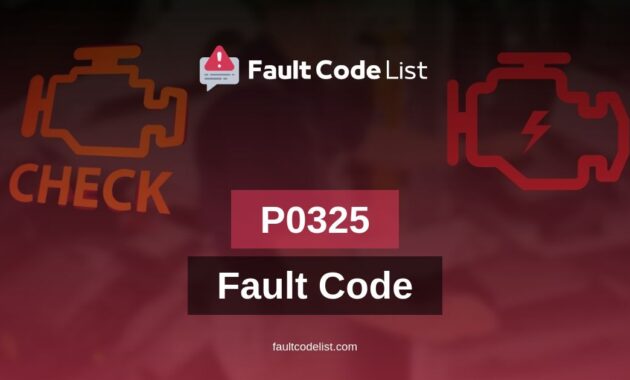If you own a car, you’ve probably noticed that strange light on your dashboard that warns you of a possible problem with your engine. One of these codes is the P0325 fault code, and it can be one of the more frustrating ones to deal with. In this article, we’ll dive into what the P0325 code is, what causes it, and how to fix it.
What is the P0325 Fault Code?
The P0325 fault code is a diagnostic trouble code that is triggered when the powertrain control module (PCM) detects an unusual voltage reading from the knock sensor circuit. The knock sensor is an important component that detects engine knocking, or detonation. If the PCM senses a problem with the knock sensor circuit, it will trigger the P0325 code.

Causes of the P0325 Fault Code
There are several reasons why your vehicle’s PCM would trigger the P0325 fault code. Some of the more common causes include:
- Malfunctioning knock sensor
- Wiring issues with the knock sensor circuit
- Faulty PCM
- Problems with the engine control module (ECM)
- Engine mechanical problems, such as excessive carbon buildup or a faulty valve
Symptoms of the P0325 Fault Code
When your PCM detects the P0325 fault code, it will turn on the check engine light. You may also notice the following symptoms:
- Poor acceleration performance
- Engine misfires
- Knocking or pinging noise coming from the engine
- Reduced fuel economy
- Difficulty passing emissions tests
Solutions for the P0325 Fault Code
If your car is displaying the P0325 fault code, there are several steps you can take to resolve the issue:
- Replace the knock sensor
- Check for any wiring issues with the knock sensor circuit
- Replace the PCM or ECM, if necessary
- Check for engine mechanical problems, such as carbon buildup or faulty valves
- Reset the code and run a test drive to see if the problem persists
Remember, it’s important to address the P0325 fault code as soon as possible to prevent further damage to your engine. Neglecting to fix this issue could lead to more serious problems down the road.
